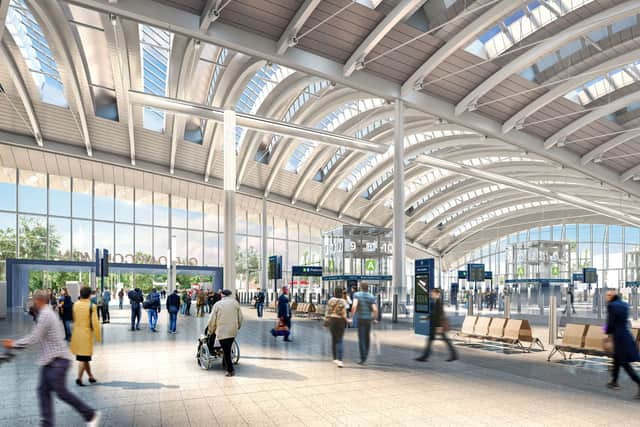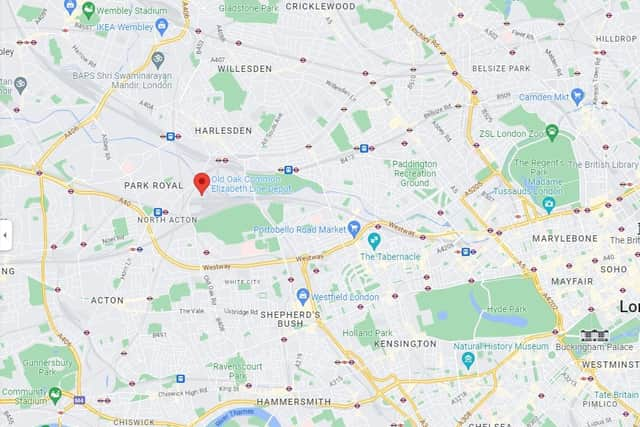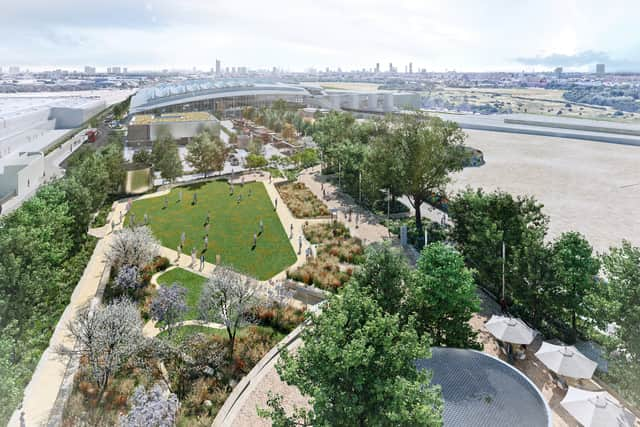HS2: Where is the Old Oak Common station being built, and when will it open?
and live on Freeview channel 276
Set to become the UK’s best-connected and largest new railway station, once finished, Old Oak Common will provide essential links for those heading both into London and out to other parts of the country.
For at least a few years, it will also be the terminus for those travelling into the capital on HS2, with users able to exchange onto connections including the Elizabeth line, while work on the final leg to Euston is completed.
Advertisement
Advertisement
More than just a train station, Old Oak Common is also part of a wider regeneration effort, and is expected to support up to 65,000 jobs and 25,500 new homes.
Below, we answer some key questions being asked about the new ‘super-hub’.


Where is Old Oak Common?
Old Oak Common is situated in west London, between North Acton and Willesden Junction stations, and just to the north of Wormwood Scrubs.
A largely industrial area, the site was previously a large railway depot and maintenance facility, which has subsequently been cleared for the new station.


When is Old Oak Common expected to open?
Advertisement
Advertisement
The planned opening date for Old Oak Common is in the early 2030s. This puts it at least a few years ahead of the anticipated opening of the HS2 line into Euston station, after the Department for Transport announced the works into central London have been further delayed to a date expected sometime between 2035 and 2041.
The government said in a statement in January that it would be “prioritising delivery of HS2 from Old Oak Common to Birmingham Curzon Street to ensure passenger benefits as soon as possible”.
Prime Minister Rishi Sunak has since confirmed to a committee the plan remains that HS2 will eventually terminate at Euston, after concerns were raised it would go no further than Old Oak Common following a National Audit Office report on the high-speed rail project’s ballooning costs.
However, until that work is complete, Old Oak Common will act as the end-point for those travelling into London on HS2, before interchanging onto other lines to head into the city.


What is being built?
Advertisement
Advertisement
The new station will have a total of 14 platforms, including six high-speed lines, and an 850m-long station box, with enough space to fit 6,300 Routemaster buses inside. A range of retail options will also be included, plus more than 50 lifts and escalators, according to the project’s website.
As well as the station, there are a number of other works planned for the area.
These include:
- A new public square outside the station entrance, including seating and cycle parking.
- A new road and cycleway, providing access for buses, taxis, drop-off and emergency vehicles to the northern end of the station.
- A new public area to the west of the station, subject to agreement at a later date, is planned which could include wildflower meadows, wetland habitat and an oak copse.
- Commercial developments to the southwest of the station. Currently being used as storage for the contractor, it is expected that work will begin on this site after the station has been built.
What connections will be available at Old Oak Common?
According to an HS2 Ltd spokesperson, which is working in partnership with the Old Oak and Park Royal Development Corporation (OPDC) to deliver the project, the station will offer connections north, south, east and west once complete.
The spokesperson said: “When it opens, passengers will be able to interchange between HS2, the Elizabeth Line to central London, East London, to Heathrow and up to Reading, as well as Great Western services to Wales and the South East.”
Advertisement
Advertisement
The London-based transport, architecture and history website IanVisits also reported how there will be provision for a London Overground station next door, with Chiltern Railways to potentially also be able to call in.
